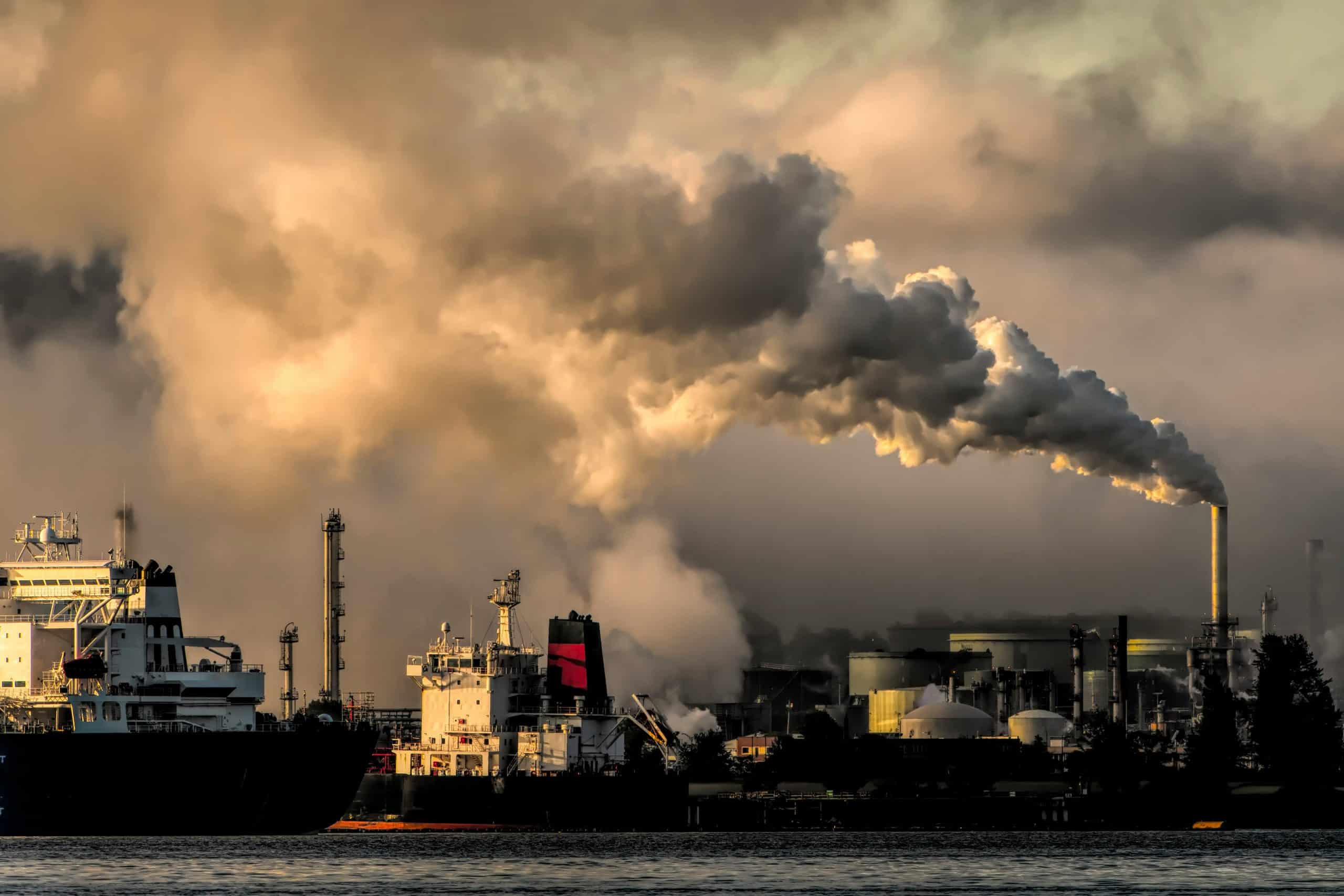As we tread further into the 21st century, we find ourselves more and more ensnared by an invisible enemy that threatens our environment, health, and overall quality of life – air pollution. The industrial development that has spurred humanity’s progress is, unfortunately, a double-edged sword. On one edge, it has significantly improved our standard of living, but on the other, it has caused severe environmental degradation. Environmental emissions, particularly airborne pollutants, are linked to climate change and can wreak havoc on our health.
However, there is a glimmer of hope. This hope lies in technology, data, and innovation. As we continue to evolve technologically, we unlock new ways to tackle this pressing issue. But what role can technology truly play in reducing air pollution? In this article, we’ll explore the potential of clean technologies, green energy, and data analytics to combat air pollution.
A lire en complément : Can AI Enhance Emotional Intelligence in Bots?
Harnessing The Power Of Clean Technologies
Clean technologies are innovations designed to improve operations, performance, or efficiency while reducing environmental impact, particularly emissions. These technologies offer great promise in our fight against air pollution. Not only do they offer a way to reduce our carbon footprint, but they also present an opportunity to improve the quality of air we breathe.
Industrial processes contribute significantly to air pollution. However, the advent of clean technologies promises to turn the tide, offering solutions that can both propel industrial development and ensure a healthier environment. For instance, carbon capture and storage (CCS) technologies have emerged as a viable solution to curb carbon emissions from industrial processes. CCS involves capturing carbon dioxide at the source, transporting it, and securely storing it underground to prevent it from contributing to air pollution.
A découvrir également : Can technology help in achieving global food security?
Another promising technology is air filtration. Modern filtration systems can remove harmful pollutants from the air, improving both indoor and outdoor air quality. For instance, HEPA filters can remove up to 99.97% of airborne particles, reducing exposure to harmful pollutants.
Green Energy: A Path To Healthier Air
The shift towards green energy is another technological trend with immense potential for reducing air pollution. Green energy refers to energy sources that are environmentally friendly and renewable. They produce little or no greenhouse gas emissions during operation, unlike fossil fuels, which are known culprits of air pollution.
Solar and wind power are among the most prominent types of green energy. Not only do they produce electricity without harmful emissions, but they also do not deplete natural resources. Advances in technology have significantly reduced the cost of these energy sources, making them increasingly viable alternatives to fossil fuels.
Another promising green energy technology is electric vehicles (EVs). Traditional vehicles emit significant amounts of carbon dioxide and other pollutants. EVs, on the other hand, do not directly produce these harmful emissions, making them a cleaner transportation option. As battery technology improves and charging infrastructure expands, EVs are set to play a more significant role in reducing air pollution.
Data Analytics: An Unseen Ally In The Fight Against Air Pollution
Data analytics is another key tool in our fight against air pollution. By analyzing environmental data, we can identify pollution sources, monitor air quality and develop strategies for improvement.
State-of-the-art sensors and monitoring systems can gather real-time data about air quality. This information, when analyzed, can provide invaluable insights about the sources and spread of pollutants. Policymakers can use these insights to implement effective measures to reduce air pollution.
The use of satellite technology also plays a vital role in pollution monitoring. Satellites can provide a bird’s eye view of global pollution patterns and identify areas of concern. They provide critical data that can inform environmental policies and strategies.
Simultaneously, predictive analytics can model future pollution trends based on current data. This can help authorities anticipate and prevent potential air quality issues, contributing to a cleaner, healthier environment.
Technological Innovation: A Beacon Of Hope
Innovation is the driving force behind the technological advances that can help us reduce air pollution. By constantly pushing the boundaries of what is possible, we can develop more efficient, effective solutions to this pressing issue.
For instance, researchers are exploring new materials that can absorb or neutralize pollutants. Nanotechnology, in particular, has shown promise in this regard. Nanomaterials have unique properties that enable them to interact with pollutants in ways that traditional materials cannot.
Similarly, biotechnology can also contribute to reducing air pollution. For instance, genetically modified organisms could potentially consume or break down pollutants.
While the challenges we face in reducing air pollution are indeed formidable, the potential of technology to help us overcome them is undeniable. By harnessing the power of clean technologies, green energy, data analytics, and innovation, we can protect our air, our health, and our future. The task before us may be daunting, but with every technological breakthrough, we move one step closer to a cleaner, healthier environment.
Augmenting Environmental Regulations through Technology
Advancements in technology have paved the way for stricter and more effective environmental regulations. Enhanced monitoring and enforcement of these regulations can result in a significant reduction in air pollution.
Traditionally, monitoring pollution levels and enforcing regulations have been challenging tasks. Policymakers often struggle to identify the exact sources of pollution, making it difficult tohold accountable parties responsible. However, recent developments in technology have made it possible to monitor air quality more accurately and trace pollutants back to their sources.
Sensor technology and remote sensing are two areas where technological progress has been particularly impactful. Modern sensors can detect a wide range of pollutants, including carbon dioxide, sulfur dioxide, methane, and other hazardous air pollutants. They can provide real-time data about pollutant concentrations and disseminate this information quickly to relevant authorities.
On the other hand, remote sensing technology, including satellites and drones, allows for large-scale monitoring of air quality. These technologies can cover vast areas and identify pollution hotspots, helping to enforce environmental regulations more effectively.
Furthermore, technology can also aid in the enforcement of regulations. For instance, artificial intelligence (AI) can analyze complex data sets to detect violations of environmental regulations. AI can also predict potential future violations, enabling preemptive action.
While technology alone cannot solve the air pollution crisis, it can significantly enhance our ability to monitor and enforce environmental regulations, leading to cleaner air and better health outcomes.
The Role of Economic Growth and Sustainable Development
The fight against air pollution is not solely an environmental issue; it is also closely tied to economic development and growth. Achieving sustainable development is crucial in the efforts to reduce air pollution. Technology can play a significant role in promoting sustainable growth while mitigating pollution.
The rise of green economy is a testament to this. Green economy refers to an economic system that aims to reduce environmental risks and ecological scarcities. It’s about economic growth that is environmentally sustainable. Technology is at the forefront of this movement, providing innovative solutions for more efficient and less polluting industries.
For instance, technology has made it possible to harness renewable energy sources efficiently. This not only reduces greenhouse gas emissions but also creates job opportunities and spurs economic growth.
Furthermore, advancements in technology can help in resource management, waste reduction, and promoting recycling, all of which are fundamental to sustainable development. Technologies such as smart grids and advanced metering infrastructure can lead to significant energy savings.
In conclusion, the role of technology in reducing air pollution is multifaceted. It goes beyond simply providing solutions to mitigate pollution. It also involves promoting sustainable development and economic growth, which are essential for a comprehensive approach to tackling air pollution.
Conclusion
Our journey into the depths of how technology can aid in the fight against air pollution reveals a plethora of opportunities. The potential of clean technologies, green energy and data analytics to combat air pollution is immense. From capturing carbon dioxide at the source to predicting future pollution trends, the tools to ensure cleaner air are within our reach.
However, it’s important to keep in mind that technology is not a silver bullet. While it offers various innovative solutions, it needs to be balanced with effective environmental regulations and a solid commitment towards sustainable development. Only with a holistic approach that combines technological innovation, economic growth and sustainable practices can we truly hope to turn the tide against air pollution.
As we continue to explore the countless ways technology can aid in our quest for cleaner air, we remain hopeful. With every technological breakthrough, we are one step closer to achieving our goal. The challenges may be formidable, but with determination, innovation and a commitment to the health of our planet, they are not insurmountable. The role of technology in reducing air pollution is clear – it’s now our task to harness its potential and pave the way for a cleaner, healthier future.





